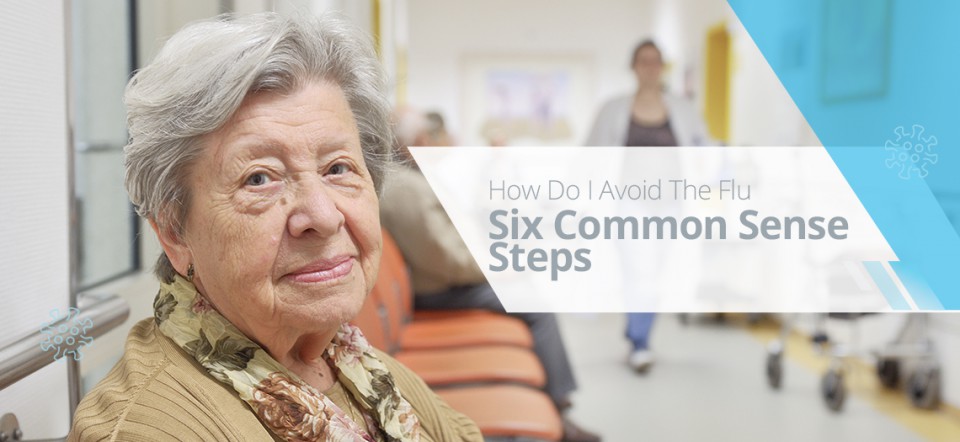SIX Steps to Avoid the Common Flu Virus
Clean and Disinfect Schools and Homes in Six easy steps to Stop the common Flu Virus
Cleaning and disinfecting are the basic approach to preventing infectious diseases in homes and schools. To help slow the spread of influenza (flu), the first line of defense is getting vaccinated. Other measures include staying home when sick, covering coughs and sneezes, and washing hands often. Below are tips on how to slow the spread of flu specifically through cleaning and disinfecting.
1) Disinfecting, cleaning, and sanitizing, what's the difference?
Cleaning removes germs, dirt, and impurities from surfaces or objects. Cleaning works by using soap (or detergent) and water to physically remove germs from surfaces. This process does not necessarily kill germs, but by removing them, it lowers their numbers and the risk of spreading infection.
Disinfecting kills germs on surfaces or objects. Disinfecting works by using chemicals to kill germs on surfaces or objects. This process does not necessarily clean dirty surfaces or remove germs, but by killing germs on a surface after cleaning, it can further lower the risk of spreading infection.
Sanitizing lowers the number of germs on surfaces or objects to a safe level. Sterilization describes a process that destroys or eliminates all forms of microbial life and is carried out in health-care facilities by physical or chemical methods. There are many was to accomplish this. Steam under pressure, dry heat, EtO gas, hydrogen peroxide gas plasma, and liquid chemicals are the principal sterilizing agents used in health-care facilities. R4 Clean uses The hydrogen peroxide-based, patented product, Binary Ionization Technology® (BIT™), a state-of-the-art technology that uses a “mist,” which can be either directional or whole room.
2) Clean and disinfect surfaces and objects that are touched often
Cleaning the basic dirt and grim in school’s and homes daily should be your first step. Surfaces and objects that are touched often, such as desks, countertops, doorknobs, computer keyboards, hands-on learning items, faucet handles, phones, and toys should then be disinfected. The best, fastest, and safest way is to call R4 Clean.
If you want to smell "nothing but clean", SteraMIST® is the service for you. It’s a powerful new technology that is used to fight, reduce, and eliminate the spread of pathogens — without contaminating the environment with any toxic byproducts.
We can disinfecting specific areas of the school or home.
3) Routine cleaning and disinfecting are key
It is important to match your cleaning and disinfecting activities to the types of germs you want to remove or kill. Most studies have shown that the flu virus can live and potentially infect a person for up to 48 hours after being deposited on a surface. ( Recent literature review suggest coronaviruses such as COVID-19, may survive up to 9 days on environmental surfaces (Kampf, 2020)).
However, it is not necessary to close schools to clean or disinfect every surface in the building to slow the spread of flu. With the typical flu special cleaning and disinfecting processes, including wiping down walls and ceilings, frequently using room air deodorizers, and fumigating, are not necessary or recommended. These can processes can irritate eyes, noses, throats, and skin; aggravate asthma; and cause other serious side effects. However, due to the resilience of COVID-19, a more aggressive approach has been used in many communities.
4) Clean and disinfect correctly
Wash surfaces with a general household cleaner to remove germs. Rinse with water, and follow with an EPA-registered disinfectant to kill germs. Read the label to make sure it states that EPA has approved the product for effectiveness against influenza A virus.
If a surface is not visibly dirty, you can clean it with an EPA-registered product that both cleans (removes germs) and disinfects (kills germs) instead. Be sure to read the label directions carefully, as there may be a separate procedure for using the product as a cleaner or as a disinfectant. Disinfection usually requires the product to remain on the surface for a certain period of time (e.g., letting it stand for 3 to 5 minutes).
Use an alcohol based disinfecting wipes on electronic items that are touched often, such as phones and computers. Pay close attention to the directions for using disinfecting wipes. Make sure that the electronics can withstand the use of liquids for cleaning and disinfecting.
5) Use products safely
If you plan on applying cleaners yourself, pay close attention to hazard warnings and directions on product labels. Do not mix cleaners and disinfectants unless the labels indicate it is safe to do so. Combining certain products (such as chlorine bleach and ammonia cleaners) can result in serious injury or death.
For the best and most environmentally safe way to decontaminate rooms call R4 Clean. In fact, a room that has been sprayed with SteraMIST is safe to enter within minutes after the Activated Ionized Hydrogen Peroxide (AIHP) mist has been applied!
- SteraMIST Fights the spread of pathogens, such as MRSA*, flu**, and Staph*
- Kills 99.9999% of Clostridium difficile (C. diff.) spores*†
- Requires no wipe and no rinse
- Leaves no residues
- Uses no toxic byproducts
- EPA approved as a hospital healthcare disinfectant
- Easy to transport
- Incredibly fast-acting
6) Handle waste properly
Avoid touching used tissues and other waste when emptying waste baskets. Wash your hands with soap and water after emptying waste baskets and touching used tissues and similar waste.
